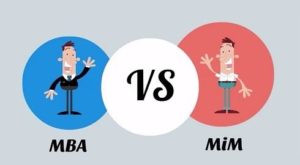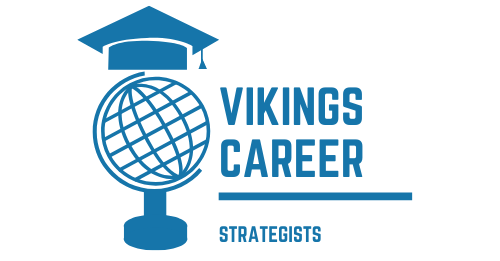
MBA or Master in Management (MIM) – There’s usually a lot of questions around these two courses. Since the difference at the top layer is not much, so most of the students get confused between MBA or Master in Management (MIM), but if you deep dive, then you will find the differences worth looking into. This might change your perception completely about MBA or Master in Management (MIM). Here, we’ll address the major differences within these courses. We’re going to point out six major differences, which will cover almost everything.
| MBA | Master in Management (MIM) | |
| Target Audience | You need to have a minimum of 2 years’ work experience. The target here are all the professionals who have done some substantial work in a particular domain in the business world. They are the ones usually targeted to opt for this course. Even though the minimum eligibility is 2 years, the average MBA grad experience in any school is around 4-5 years. | The target audience here is fresh college graduates, or graduates with a bare minimum of work experience, ranging from 6 months to 2 years maximum. |
| Objective | The objective here is to deep-dive and get into specialized knowledge, where you’re already familiar with a specific domain and the focus is to apply those ideas, and also focus more on the application of business techniques. | The focus here is more on building the fundamentals. Students are given basic knowledge about quantitative and critical thinking, or analytical knowledge in order to build some business fundamentals. This is so students can understand what are all the business linkages, and what are the different domains in business, so that they may make a career in specific domains that they prefer, whatever is their right fit. |
| Pedagogy | The teaching method in this course focuses more on the application part, not that the theoretical part isn’t there, but more emphasis is on practical work, like fieldwork, and live projects. Since students already do have some first-hand work experience, it’s time for some deep-dive into specific domains. Another focus here is on leadership development and a considerable amount of time and projects are assigned to this. | The teaching here is more theoretical and academic. It’s rightly so because most students are very young. They first need to learn the basics through these courses and then they can execute those skills. This helps them to build business fundamentals such as understanding the business domains, linkages of those domains, along with the leadership element. |
| Duration.
Age. Fees. |
Duration – in the US, it’s more or less 21 months; in EU countries, it’s mostly 1 year or 16-18 months.
Age – 27-29 years (maybe even more with few schools in APAC and EU regions) Fees (these figures are general, and can differ from region to region) – 80k-90k USD |
Duration – these are usually shorter programs so they range from 12 – 16 months; some universities do offer courses that range from 20-22 months.
Age – 21-23 years across the globe Fees (these figures are general, and can differ from region to region) – 40k-50k USD |
| Career Opportunities | Most MBA grads are looking for mid-level or senior-level positions since they have already worked in specific sectors for some years. Students here are looking for a level-up job or opportunity in a different domain. The recruiters also engage and look for MBA students from a different perspective. Most of them will be offered mid-senior level and leadership roles, but definitely few of the young candidates start with the entry roles even after an MBA. The average salary would be 90k-100k annually. | Pretty much all the opportunities post this course are for entry-level jobs, like iBanking, financial services, associate or analyst roles that they would get. Since the program is designed for fresh graduates, so the roles are also offered accordingly with few exceptions, to kickstart the career. But definitely, many top recruiters such as Apple, JP Morgan, Google, etc. hire these young candidates for a variety of roles. The average usually is 50k-60k annually for the majority of the batch size. |
| Top Regions / Colleges | This course is very well globally spread, with good schools in Asia and Europe. But dominance is in US schools. You can compare rankings and the top 50 would most likely comprise US-based schools. Having said that, there are some really great MBA schools outside the US such as INSEAD, CEIBS, LONDON BUSINESS SCHOOL, HKUST, NUS SINGAPORE ETC. | Most of the good colleges are in the European regions like HEC Paris, London Business School, IE Spain. Of course, the USA also has good schools, but we would recommend Europe for this course. |
Subscribe for the latest videos on a variety of careers, study abroad, interview, resume, etc.
https://www.youtube.com/VikingsCareerStrategists
We hope now you can make an informed decision about whether you want to go for an MBA or Master in Management program (MIM). These are a few of the top MBA and Master in Management (MIM) schools across the globe. We will cover all the details of these schools in a separate blog.
Top 5 MIM programs
The University of St. Gallen
HEC Paris
ESSEC Business School
WHU Otto Beisheim School of Management
ESADE Business School
Top 5 MBA programs
Stanford Graduate School of Business
University of Pennsylvania: Wharton



